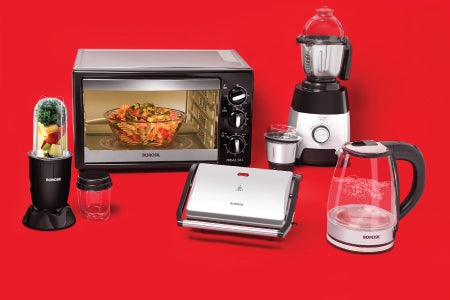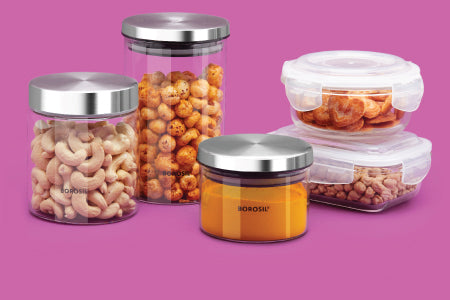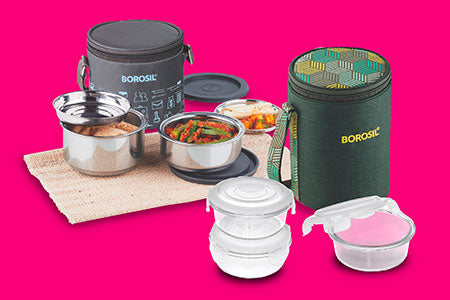
Bread Pakora Recipe
Bread Pakora Unwrapped: Nostalgic Indian Delight
In Indian street food, few delights evoke nostalgia and warmth like the beloved Bread Pakora. Hailing from the heart of North Indian cuisine, with deep-rooted Punjabi influence, these savoury fritters or patties are a testament to the rich blend of flavours found on the streets of India. Whether you call them Bread Pakora, Bread Bajji, or savoury bread patties, they are a culinary journey worth taking.
Bread Pakora represents the very essence of comfort food. These savoury patties are born from a simple yet flavourful amalgamation of bread slices, spiced gram flour (besan) batter, and then deep fried in oil.
The street-side charm of the Bread Pakora recipe and the sweet memories of indulging in piping hot delights from roadside vendors or savouring homemade versions lovingly prepared by family members are integral parts of the Indian food journey. Doesn’t it sound mouth-watering? Let's get straight into the recipe for Bread Pakora!
Mastering the Craft of Bread Pakora: Step-by-Step Guide
Ingredients
For Gram Flour Batter:
- 1 cup of besan
- ¼ teaspoon turmeric powder
- ¼ teaspoon red chilli powder
- ½ teaspoon ajwain
- ¼ teaspoon garam masala powder
- Pinch of the hing or asafoetida
- Salt as per requirement
- Half a cup of water
- 1-2 teaspoon hot oil
For Potato Stuffing:
- 2 medium-sized or 1 large boiled potato
- 1 teaspoon chopped fresh coriander leaves
- 2 spoons finely chopped mint leaves
- 1-2 finely chopped green chillies
- Add ¼ teaspoon of red chilli powder
- ½ teaspoon dry mango powder
- Salt to taste
For Pakora:
- Milk/White/Brown Bread
Preparation Process
Step 1
Prepare the Potato Stuffing:
The potato mixture is nothing short of a flavour explosion. The mashed or grated potatoes take centre stage.
- Boil or steam 2 medium-sized or 1 large potato until fork-tender.
- Peel and grate the warm potatoes (you can also mash them). Keep them in a bowl.
- Add finely chopped coriander, mint leaves, green chillies, and red chilli powder. You can add dry mango powder if you like. Otherwise, you don't have to.
- Add salt according to your taste. Mix all the spice powders and herbs with the mashed potatoes.
Step 2
Create the Gram Flour Batter:
Besan batter is the heart and soul of the batter. Besan, infused with aromatic spices, creates a symphony of flavours.
- Place besan into a mixing bowl. In addition, add turmeric and red chilli powder, ajwain, garam masala, A pinch of the hing and salt as per requirement.
- Add half a cup of water.
- Stir and mix very well to a medium-consistency batter.
- For deep frying, add hot oil to the batter and then stir the batter briskly in a clockwise motion with a wired whisk or spatula for a minute or two. It makes the pakoras light and fluffy.
Step 3
Assemble the Bread Sandwiches:
- Slice the bread into either triangles or rectangles.
- Mix 2-3 tablespoons of the prepared potato mixture evenly on a bread slice.
- Cover the potato-stuffed slice with another bread slice, creating a sandwich.
- Gently press the sandwich to secure the stuffing.
Step 4
Fry the Bread Pakora:
- Heat oil in a kadai or wok. Test the oil by adding a small drop of batter; it should sizzle and gradually rise to the surface.
- Gently dip the sandwich into the besan batter, ensuring it's evenly coated but not soaked for too long.
- Carefully place the batter-coated sandwich in the hot oil.
- Fry until golden and crisp, turning a few times.
- Use a slotted spoon to remove the fried bread pakora and place them on kitchen paper towels to drain excess oil.
Step 5
Serve and Enjoy:
- Serve Bread Pakora hot with coriander or mint chutney, tomato ketchup, or tamarind chutney.
- Pair them with a cup of ginger chai or masala chai for a truly delightful Indian snack.
Pro Tips for the Perfect Bread Pakora
- Potatoes: For the Bread Pakora recipe, choose high-starch potatoes like Idaho or Russet for the stuffing. Avoid those that are new or possess a gummy texture.
- Gram Flour: Opt for good-quality besan or gram flour within its shelf life.
- Spices and Herbs: Embrace your creativity by experimenting with various combinations of spices and herbs to craft unique variations.
- Frying Technique: To ensure your pakoras are not excessively oily, maintain medium heat for frying. High heat can result in uneven cooking, while low heat can lead to excessive oil absorption.
- Crispiness Enhancement: Add a teaspoon of hot oil to the besan batter to achieve extra crispiness.
- Batter Consistency: Strive for a medium consistency batter to ensure the perfect balance of a soft, fluffy exterior.
Conclusion
Bread Pakora is more than just a snack; it expresses love, comfort, and the delightful chaos of Indian street food. So, whether you're recreating cherished memories or embarking on a culinary journey, these savoury patties will be your perfect companion, whispering tales of tradition with every crispy bite.
Frequently Asked Questions
To cook on a griddle, just heat about 3 to 4 tbs. of oil. When one side of the stuffed bread sandwich is golden, gently flip and cook the other side. When flipping, make sure the stuffed sides or edges of the bread are in contact with the griddle so the filling does not ooze out.
Bread Pakoras are deep-fried and best enjoyed occasionally due to their calorie content. You can make them healthier using whole wheat or multigrain bread instead of white bread.
Most pakoras are gluten-free and made from besan (gram flour). However, if you add asafoetida to the gram flour batter, it will no longer be gluten-free.
Yes, it is possible to prepare Bread Pakoras by baking or air frying them at 180 degrees Celsius. However, the texture may not match that of deep-fried pakoras. Add a small amount of oil to maintain a crispy outer layer while baking or air frying.
The ideal frying temperature is between 180 to 190 degrees Celsius. You can check the temperature by dropping some batter into the oil. The oil is ready if it sizzles and gradually rises to the surface. The oil needs more heat if the batter droplets remain at the bottom. If they rise rapidly and brown quickly, the oil is too hot.





















